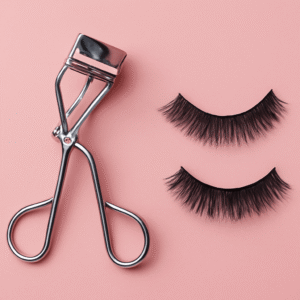Living with diabetes already requires careful daily management, but when neuropathy enters the picture, foot health becomes even more critical. Neuropathy, or nerve damage, often leads to numbness, tingling, burning sensations, or loss of balance in the feet. For men with diabetes and neuropathy, finding the right best men’s shoes for diabetics with neuropathy is not just about comfort—it’s about safety and prevention. The wrong footwear can cause blisters, pressure sores, or injuries that may go unnoticed due to reduced sensation, potentially leading to severe complications.
In this guide, we’ll explore what makes a shoe “neuropathy-friendly” and highlight some of the best men’s shoes for diabetics with neuropathy.
What to Look for in Diabetic Shoes
Before diving into recommendations, it’s helpful to understand the features that make certain shoes ideal for men with neuropathy.
-
Wide and Deep Toe Box
Extra room reduces pressure on the toes, preventing corns, bunions, and rubbing that can lead to sores. -
Superior Cushioning and Shock Absorption
Memory foam, EVA midsoles, or air-cushion technology help reduce impact and evenly distribute pressure across the foot. -
Supportive Arch and Heel Cup
Good arch support improves stability, while a U-shaped or contoured heel cup keeps the foot aligned and reduces fatigue. -
Soft, Seamless Interior
Smooth linings prevent friction and irritation, especially important for sensitive or numb feet. -
Adjustability
Shoes with Velcro straps or stretch uppers can accommodate swelling, high insteps, or wide feet. -
Slip-Resistant Outsole
Neuropathy can affect balance, so traction is key to preventing falls.
Top Men’s Shoes for Diabetics with Neuropathy
Here are some of the best options combining comfort, support, and protective design.
1. Orthofeet Edgewater Stretch Knit
Orthofeet is one of the most trusted brands for diabetic footwear. The Edgewater Stretch Knit offers a roomy toe box, cushioned sole, and stretchable upper that adapts to swelling. The orthotic insole provides excellent arch support, while the ergonomic sole reduces pressure on the heel and ball of the foot.
Why it works: Extra depth, non-binding fit, and premium cushioning designed for neuropathy relief.
2. Dr. Comfort Winner Plus
This athletic-style shoe blends sporty looks with medical benefits. It has a breathable mesh upper, removable insoles, and lightweight construction. The shoe is Medicare-approved for diabetic use and can be paired with custom orthotics.
Why it works: Great for active men who need both protection and performance in everyday walking or light exercise.
3. New Balance 928v3
A mainstream option that doesn’t sacrifice medical-grade support. The 928v3 provides motion control, a Rollbar stability system, and plush cushioning. Its wide sizing options make it a good fit for men with swollen or wide feet.
Why it works: Combines the style of a standard sneaker with serious stability and diabetic-friendly design.
4. Propét Stability X Strap
This walking shoe is designed for maximum adjustability with a wide Velcro strap closure, making it easy to get on and off. It offers a padded collar, firm heel counter, and supportive midsole. The leather and mesh combination adds both durability and breathability.
Why it works: Ideal for men with limited mobility or difficulty tying laces, while still offering secure fit and support.
5. Brooks Ghost Max
Though not marketed strictly as a diabetic shoe, the Ghost Max has gained attention for its exceptional cushioning and rocker-style sole. This design helps smooth the walking motion, reduces stress on the foot, and improves balance for men with neuropathy.
Why it works: Excellent shock absorption for those who spend long hours walking or standing.
6. FitVille Rebound Core
FitVille specializes in extra-wide shoes, and the Rebound Core is a standout for men with neuropathy. It offers widths up to 6E, dual-density cushioning, a wide toe box, and slip-resistant outsole. The U-shaped heel cup and shock-absorbing pad provide both stability and comfort.
Why it works: Extra-wide sizing and ergonomic design make it perfect for swollen feet, bunions, or hammertoes common among diabetic patients.
Tips for Choosing the Right Shoe
Finding the best shoe involves more than just brand names. Keep these tips in mind:
-
Consult a podiatrist: A foot specialist can recommend shoes tailored to your specific needs and may prescribe orthotics.
-
Check for Medicare coverage: Many diabetic shoes, including those from Dr. Comfort and Orthofeet, qualify for Medicare or insurance reimbursement.
-
Inspect shoes regularly: Look for worn soles, rough seams, or damage that could cause irritation.
-
Wear moisture-wicking socks: They help control sweating, reduce friction, and prevent fungal infections.
-
Replace shoes every 6–12 months: Even the best shoes lose cushioning and support over time.
Final Thoughts
For men with diabetes and neuropathy, the right footwear is not optional—it’s a vital part of staying healthy and mobile. Shoes like Orthofeet Edgewater, Dr. Comfort Winner Plus, New Balance 928v3, Propét Stability X, Brooks Ghost Max, and FitVille Rebound Core strike the balance between medical safety and everyday comfort.
By prioritizing features like a wide toe box, superior cushioning, adjustability, and slip resistance, you can significantly reduce the risk of foot injuries, improve balance, and enjoy greater peace of mind in daily activities.
Investing in quality shoes may cost more upfront, but the long-term benefits—reduced pain, fewer complications, and improved quality of life—make it well worth it.



